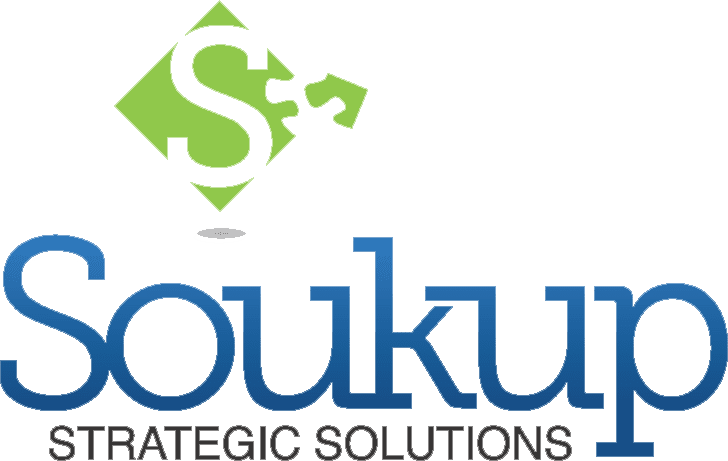Did you know that nonprofits with a strategic plan are 50% more likely to achieve their mission goals?
Navigating the complex landscape of nonprofit management requires more than passion and dedication — it demands a well-crafted strategic plan for nonprofits. For organizations looking to amplify their impact, a clear plan acts as a roadmap, ensuring every action aligns with overarching goals and engages stakeholders. Use these essential steps to create a plan that aligns your team, clarifies priorities, and positions your nonprofit for lasting success.
Define the Mission and Vision
The foundation of any strategic plan is a clear understanding of your nonprofit’s mission and vision. These elements form the guiding compass for all decisions.
- Mission Statement: Define why your nonprofit exists — your core purpose and primary objectives.
- Vision Statement: Describe the long-term impact you aspire to achieve. This vision should inspire and guide your strategic planning.
Articulating these elements provides a solid framework and ensures all strategic efforts are aligned with your core values and goals.
Engage Stakeholders in Strategic Planning
Building a strategic plan is a collaborative effort. Engaging stakeholders—such as Board members, staff, volunteers, and beneficiaries—ensures diverse perspectives are considered. This inclusive approach fosters a sense of ownership and commitment. To engage effectively:
- Involve Key Players: Include those who will be integral to the plan’s success.
- Solicit Feedback: Seek input regularly to capture different viewpoints.
- Foster Commitment: Create opportunities for stakeholders to contribute actively, enhancing their investment in the plan’s outcomes.
By integrating these practices, you build a strategic plan that reflects the needs and insights of all those involved.
Conduct a SWOT Analysis
A comprehensive SWOT analysis is crucial for understanding your organization’s current position and planning for future growth. Here’s how to effectively conduct a SWOT analysis:
- Identify Strengths: Assess internal factors that give your organization an advantage, such as skilled staff, strong donor relationships, or unique programs.
- Recognize Weaknesses: Examine internal areas that need improvement, like limited resources, gaps in expertise, or operational challenges.
- Explore Opportunities: Look at external factors that could benefit your organization, such as emerging trends, new funding sources, or community needs.
- Analyze Threats: Identify external challenges that could impact your organization, such as economic downturns, increased competition, or regulatory changes.
By systematically evaluating these areas, you gain a clear, realistic view of your organization’s position and can develop strategies to leverage strengths, address weaknesses, capitalize on opportunities, and mitigate threats.
Set Clear Objectives for an Effective Strategic Plan
Establishing clear, measurable objectives is vital. Objectives should:
- Align with Mission and Vision: Reflect your core purpose and long-term goals.
- Address Challenges and Opportunities: Tackle issues and build on strengths.
Objectives serve as the roadmap, guiding your organization toward its desired outcomes and providing benchmarks for success.
Develop Actionable Strategies
With clear objectives in place, the next step is to formulate actionable strategies. These strategies outline specific approaches for achieving your goals. Key considerations include:
- Resource Allocation: Decide how to best use available resources.
- Timelines: Set realistic timeframes for each goal.
- Performance Indicators: Identify metrics to track progress and success.
By detailing these strategies, you create a practical approach to implementing your plan and achieving desired results.
Establish an Evaluation System
Implementing an effective evaluation system is essential for ensuring that a strategic plan stays on course. To achieve this, organizations should regularly track key metrics and milestones to assess their progress toward objectives. This ongoing monitoring helps to identify any areas where strategies may need adjustment or improvement:
- Track Metrics and Milestones: Regularly monitor important metrics and milestones to evaluate progress and confirm that the strategic plan is on track.
- Identify Areas for Adjustment: Utilize evaluation data to pinpoint areas that may require changes or enhancements to better meet objectives.
- Celebrate Achievements: Recognize and celebrate milestones and successes to boost motivation and morale within the organization.
- Maintain Plan Relevance: Continuously review and refine the evaluation system to ensure that the strategic plan remains relevant and aligned with organizational goals.
By integrating these practices, nonprofits can ensure their strategic plan evolves effectively and continues to drive success.
Communicate Your Strategic Plan Effectively
Communication is key to successful implementation. To ensure clarity and alignment:
- Create a Communication Plan: Define how the plan will be shared with stakeholders.
- Utilize Various Channels: Share through meetings, emails, newsletters, social media, and your website to reach different audiences.
- Encourage Two-Way Communication: Invite feedback and address questions to build trust and engagement.
By maintaining transparent communication, you align stakeholders with the strategic plan and drive successful execution.
Secure Resources for Implementing Your Plan
Executing a strategic plan requires adequate resources, both financial and human. Develop a resource mobilization strategy to:
- Identify Funding Sources: Seek donors and grant opportunities.
- Establish Partnerships: Build relationships with organizations and individuals who can support your goals.
- Leverage Volunteer Networks: Utilize volunteers effectively to support various aspects of your plan.
Sustainable resourcing is crucial for the successful implementation and ongoing support of your strategic plan.
Review and Improve Your Strategic Plan
Strategic planning is an iterative process. Regularly revisit your plan to ensure it evolves with your organization.
- Lessons Learned: Incorporate insights gained from implementation experiences.
- Changing Circumstances: Adapt to evolving external and internal factors.
- New Insights: Integrate new information and perspectives.
Viewing your strategic plan as a dynamic document ensures it evolves with your organization’s growth and changing needs.
Strategic Plan for Nonprofits: Final Thoughts and Next Steps
Crafting a strategic plan for nonprofits is more than a task on a checklist — it’s a dynamic process that calls for thoughtful planning, stakeholder engagement, and regular improvement. By following these steps, nonprofit leaders can build a clear roadmap that guides daily actions and positions the organization for sustainable growth. A well-developed strategic plan for nonprofits helps navigate challenges, seize opportunities, and fulfill your mission with greater impact.
Don’t let your nonprofit’s potential go untapped. Begin crafting a strategic plan today to enhance your organization’s impact and ensure a clear path forward. To support you in this process, consider these next steps:
- Assess Your Current Plan: Review your existing strategic plan (if any) to identify areas for improvement or updates.
- Engage Your Team: Bring key stakeholders together to clarify your mission, vision, and goals.
- Get Expert Help: Connect with our team for customized consulting services to guide your strategic planning process.
Ready to take your nonprofit’s strategic planning to the next level? Let’s work together to develop a tailored strategic plan that aligns with your mission and maximizes your impact. Contact us today for a free consultation and let’s start transforming your vision into actionable results.






